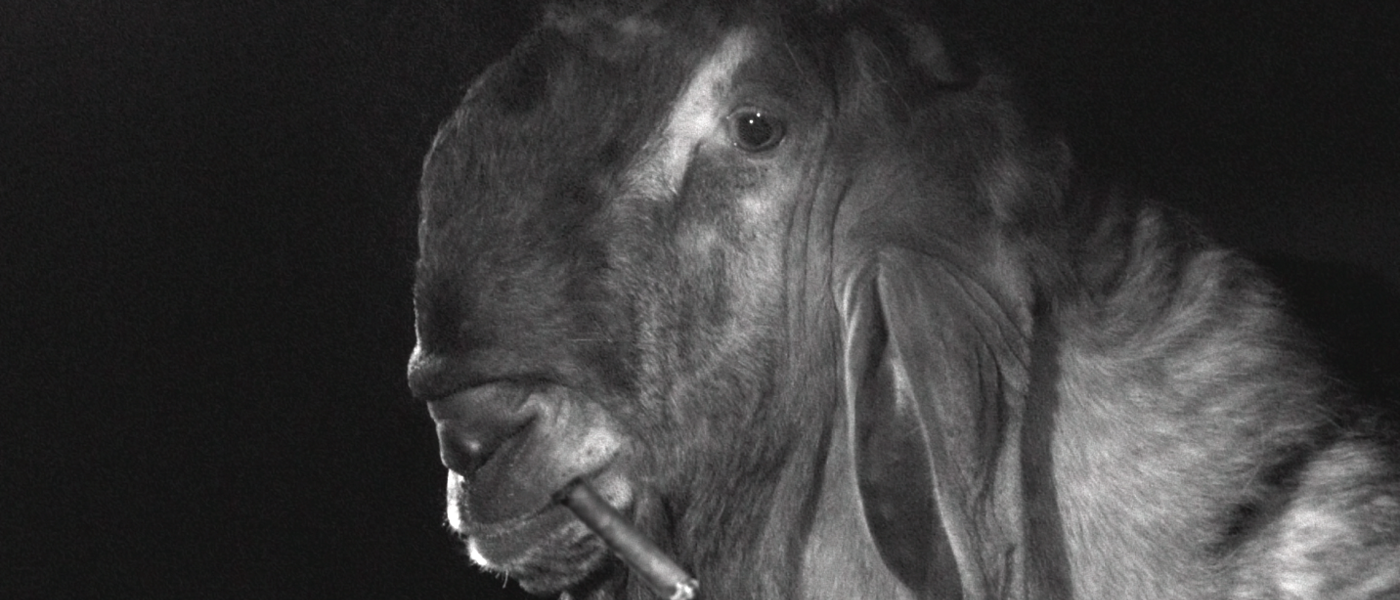Interview with Ananth Subramaniam, Bleat! director
by Léo Ortuno

by Léo Ortuno
Strange news for this elderly farming couple: their prized billy goat is pregnant. A mystery of nature that brings an absurd twist to this seemingly unflappable Malaysian village. Filmed in magnificent black and white, Ananth Subramaniam subverts our expectations and weaves a story about gender that is part fable, part farce. Playful and political, Bleat! addresses the generational divide with humour and subtlety, without losing sight of the gravity of the subject.
Interview with Ananth Subramaniam
A Tamil film in Malaysia
As part of the Tamil minority in Malaysia, there’s always an unspoken rule. As long as you are a goat, everything’s fine. But the moment that goat starts showing signs of desire, independence, or even steps beyond its little patch of farmland, ground around the goat starts trembling. That’s the tension I feel. Wanting to live freely and authentically in a place that’s supposed to be home, but still feeling out of place. With that, our stories often get sidelined or reduced in the larger Malaysian narrative. I wanted to tell a Tamil story that doesn't apologise for itself, one that represents my community with honesty, without watering anything down just to make it more digestible. Because if I don’t do it, who will?
Black and white
We chose black and white to keep things raw and honest. It helped us focus on the simple, stripped down lives of the people in the story. There were no distractions, just real emotions and everyday moments. This film is about tradition, rebellion, and community, and the black and white look made it feel more timeless and grounded. This is not a nostalgic black and white... It’s a modern one, with high resolution and full surround sound. The audience needs to feel the reality of the world first and then be caught off guard when the magical realism sneaks in out of nowhere.
Visions of a billy goat
This vision of a pregnant goat started with an image that stayed with me. Something primal and powerful. I wanted a visual that could cut through the surface and stir something deep, both in the characters and in the audience. It felt like the right spark to ignite the chaos that follows.
We love our goat, Big Boy. He’s a really good dude. While writing, I was pretty aware of the limitations that come with working with animals. So a lot of the scenes were designed in a way that made sure the goat never felt any kind of stress. We fed him well, let him rest as much as he needed, and best of all, he was always surrounded by other goats on the farm. The only challenge? He didn’t care for my directions. I’d ask him to move left, and he’d just stare right through me. But, I guess that’s on me for not learning how to bleat properly before the shoot.
Gender
We're seeing some awareness around gender equality, but there’s still a lot of resistance, not just from older generations but younger ones too. And just changing a law or having a conversation is clearly not enough. Gender equality isn’t just about legal rights, it’s about changing mindsets, and that happens one person at a time, one generation at a time. But for now, you might say there is still a lot of work to be done in embracing differences.